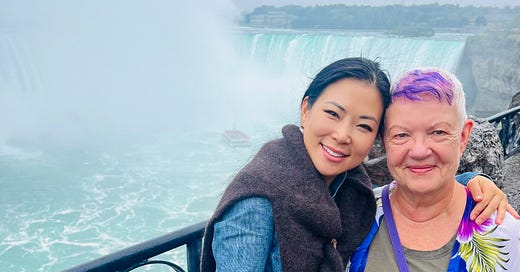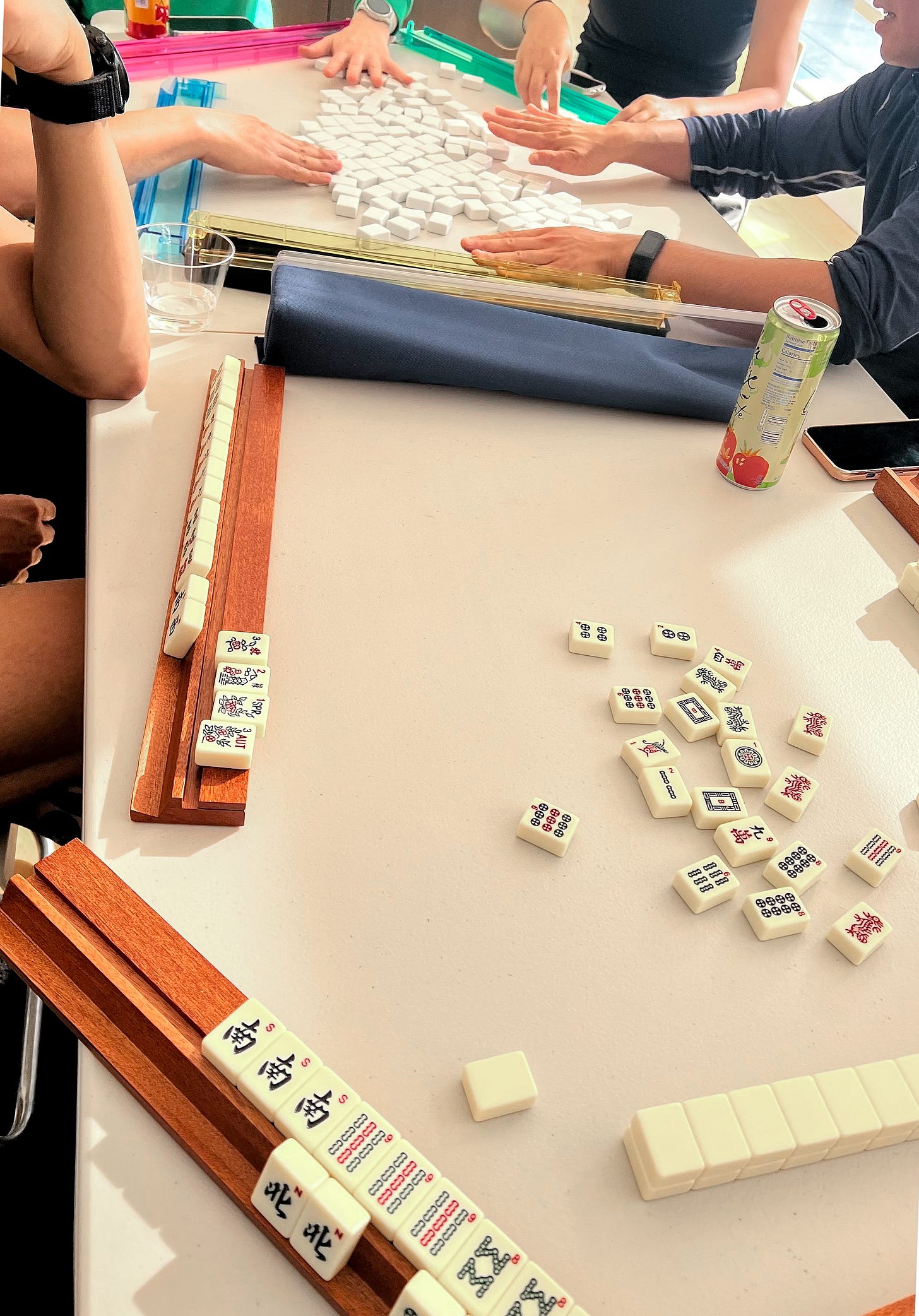"How do adults make friends?"
Overcoming loneliness by building meaningful adult friendships through small, intentional steps in a busy world.
My niece (13) and I were enjoying ice cream together, staring out into the busy streets of New York, when she startled me with this innocent question. She probably doesn’t know that many adults are also pondering the same thing all over the US. Surrounded by an endless stream of people, you feel eternally hopeful that New York will help you constantly and instantly find your tribe. Yet, many regularly feel lonely in a city of endless possibilities and chance encounters (just how many rom-coms start with a chance meeting between potential partners and friends on the streets of this city?).
Loneliness is not a New York-specific issue. Just last year, the US Surgeon General declared loneliness and isolation an epidemic that harms both individual and societal health. Even if you can put aside serious long-term health considerations (“The physical health consequences of poor or insufficient connection include a 29% increased risk of heart disease, a 32% increased risk of stroke, and a 50% increased risk of developing dementia for older adults, additionally, lacking social connection increases the risk of premature death by more than 60%”), not having close friends to brunch with can make you wonder if something is wrong with you (side note: dating isn’t any more manageable, especially in big cities and apps aren’t helping either).
While some studies show that men are the lonelier group, with up to 15% reporting having no friends (!), women aren’t immune to the difficulties of forming adult friendships. So, I wanted to share a few suggestions that helped me maintain and continue building new relationships. First, let’s revisit a few considerations and studies about communities, friendships, and relationships.
Considerations
Dunbar’s number: first suggested by anthropologist Robin Dunbar, it theorizes that average humans can maintain about 150 relationships. This may sound like a very high number, but it includes casual acquaintances like neighbors, your mailman, and the grocery store clerk you recognize. This can apply to parasocial relationships with social media influencers or loosely held acquaintances whose vacation photos you occasionally scroll through and comment on. This means that even if you are not building fulfilling close relationships, you may be at your maximum Dunbar number of maintenance.
Types of friendships: There are many frameworks for friendships, but I like to keep it to three: 1. Activity friends 2. Confidante friends 3. Ride or die (you know what I mean). This is important because, in childhood, we grow up believing that each friend should satisfy all three types of needs, which is possible when the same friend you go to school with is the one you also confide in about your math class crush while getting out of trouble together.
As adults, we become more complex: our hobbies, geography, and values broaden and sharpen, which means finding all three types of friendship in one person will be difficult. Therefore, it’s ok not to set this impossible bar: finding out your sports friend can’t be trusted with a secret doesn’t mean you can no longer enjoy watching the game together, just as the friend who shares your deepest values and desires may not be the one to pick you up from the hospital after that wisdom tooth removal.
Your friends don’t need to be like you. As children, we found friendships based on proximity—same school, sports, extracurriculars, age, race, etc. Outputs of decisions we did not make. Then, as adults, we seek connections with people of similar jobs, income, education, and ethnicities. How often do you hear, “You guys look like you should be friends!”? Of course, having similar education and ambitions might indicate shared values and choices, but be open to friendships with those who aren’t “like you” on the surface. That much older woman who shows up in the same yoga class as you may become the favorite person you look forward to seeing every weekend if you get to know her. We sometimes see viral posts of “unlikely friendships” between people with significant age differences and geography, but why should such a connection be so “unlikely”?
How can one make friends?
Hopefully, these perspectives have broadened your definition of quality and types of friendships. Now, how do you find them? Here are a few things that worked for me.
Spread the word, but make it easy for introductions. Instead of asking, “Do you know anyone I should be friends with?” which puts a tremendous burden on the introducing party, be specific. “Do you know anyone in the sciences who works out a lot?” helps people have a reason to introduce you than “you should be friends.”
Try an activity-driven approach. Forming initial connections can be awkward (especially if you are an introvert like me!), and you can spend a long time fishing for commonalities. Instead, ask who would like to participate in something specific. I wanted to learn to play Mahjong, and I have put together a small group that started playing the game (“hey do you know anyone who knows how to play?”) and now spends more time gabbing about everything else. Similarly, I wanted to try afternoon tea spots and now meet regularly with new friends who want to join me. I met them at a networking event, and conversion to friendship was as easy as finding a common interest to participate in. You can do this based on a hobby you already have or a brand-new activity you can build on together.
Create a structure for consistency. Studies show that forming friendships can take up to 90-200 hours. This is an easy feat in high school but difficult as an adult, but you can build up to it through consistency. My Majong and Tea groups meet about once a month, and this commitment enables structure and lowers the threshold for putting a new group together every time. It also gives you something to look forward to regularly, and we have funny group chat titles to bond us (sounds silly, but small things make you feel like a community).
Create as many loose ends as possible. Recently, I was invited to a happy hour with a new group of women. This was many years in the making! A couple of years ago, when I was catching up with an old colleague, I mentioned I would love an introduction to anyone he knows I can talk about healthcare investments with. He introduced me to his current colleague. She and I met, and since then, we have formed a small group that now meets about quarterly for fun brunch outings. Bonus: it turned out that one of the women, and I have a mutual friend whom I met through similar introductions a few years ago so that I will meet up with this sub-group of friends as well. You never know who knows who, so use tip 1 and don’t force the connection immediately. Loose ends in many places will eventually find you when you least expect it, and some friendships take years to materialize.
Hold “office hours.” Coordinating schedules is one of the most challenging aspects of meeting up as adults. If you can accommodate, do it without ego! Another tip is to let friends know any routines they can join you on. I walk every morning, and my friends know they are welcome to join me. On most days, it’s just me, podcasts, and the East River ducks, but on some days, I am joyfully joined by a friend who wants to catch up on a walk. Knowing when and where they can find me without coordinating (for me, this is 6-7 a.m.) works for me. For you, it might be grocery shopping, errands, or even folding laundry (really! I have watched my friends do chores while catching up, which bonds you differently).
Say hi. Connections don’t have to fall apart because you can’t coordinate a time together. I occasionally scroll down my text list and reach out to friends I haven’t spoken to in a while to say hi. Sometimes, it’s a simple “how are you?” but often, a picture, news, or a meme that might bring a smile to their face. Small gestures with no burden of commitment can help you bond even when far apart, and even the most insignificant moments can become significant when shared. “I was having this beer and thought of the time you and I tried that dive bar!” How sweet is that message to receive for anyone?
Forming meaningful relationships can feel even more challenging when we don’t live in small communities with predictable routines and limited activity options. I feel you. It takes time to build bonds. Start with low-stakes activities, expect not one person to provide all the fulfillment you need, and get curious!
Where You At
I recently launched a new exciting series called “Where you at.” This series explores diverse professional journeys and asks questions we all want to know: How did you figure out your career goals? Are you happy at your job? How much do you make? We are collecting submissions (anonymous!) and will be dropping fresh profiles every week. Come be nosy, comment, and ask questions!
You can also submit your career story or question—good or bad—to my career confession box. All anonymous of course!
In Case You Missed It
Video content you may like
Identifying the main source of joy in your job to help you find fulfillment
Many roles don't live up to the hype; look beyond them to find what truly makes you happy











